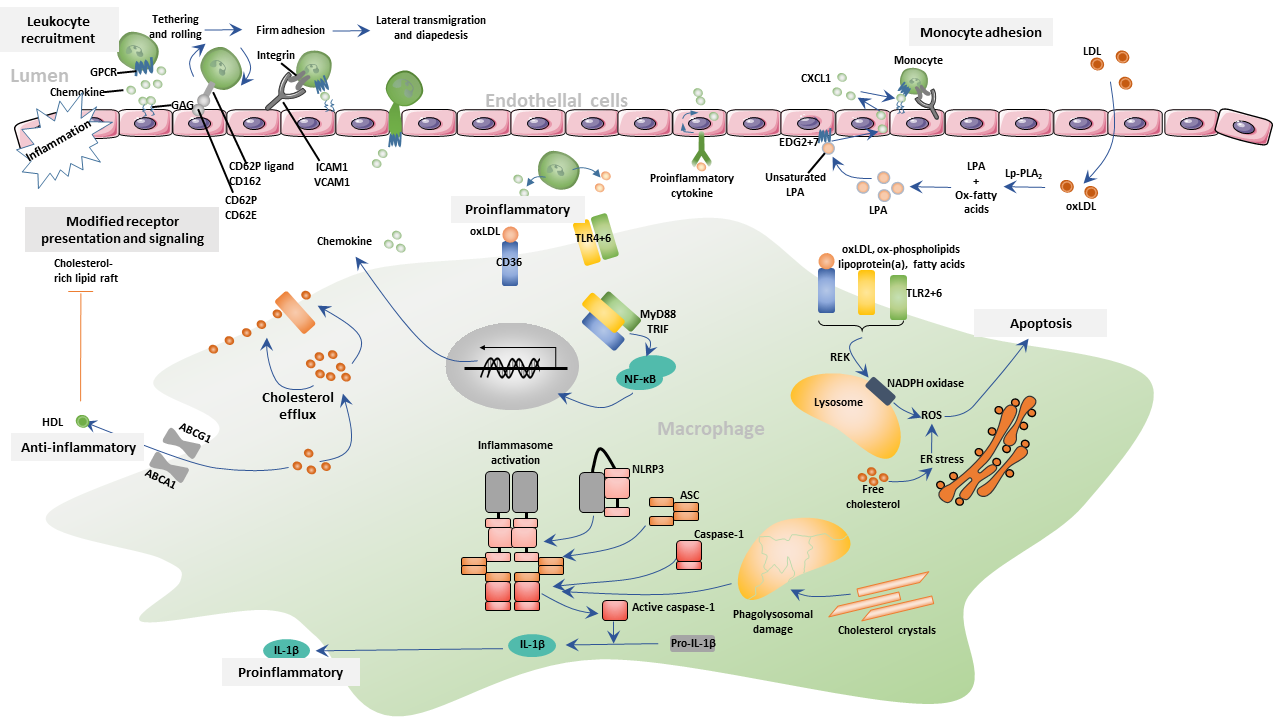
What Is Atherosclerosis?
The term atherosclerosis (AS) comes from Greece and describes the connection between steatosis and vascular sclerosis. AS is a chronic inflammatory disease caused by the maladaptive immune response driven by the imbalance of lipid metabolism and the accumulation of macrophages containing cholesterol in the arterial wall.
The Process of Atherogenesis
The process of atherogenesis consists of three phases, including fatty streaks formation, atheroma formation, and atherosclerotic plaques formation.
Immense amounts studies have demonstrated that the formation of fatty streaks is the first sign of atherosclerosis. Under normal conditions, LDL-C runs in the vascular cavity. When encountering high blood pressure, diabetes, smoking, and other factors, the vascular endothelium is damaged, allowing LDL-C to enter the vascular endothelium. After LDL-C enters the vascular endothelium, it is easily oxidized to OXLDL-C. With the occurrence of oxidation, the immune system will release inflammatory factors into the lumen, which induces monocytes to enter the endothelium and then phagocytose the oxidized LDL-C, forming foam cells. These foam cells, together with T lymphocytes, form the fatty streak. Apoptotic foam cells release free oxidized LDL-C, forming a lipid core. Vascular smooth muscle cells migrate and proliferate to form a fibrous cap, which covers the lipid core, forming plaques. Plaques rupture when they are unstable, leading to clotting substances in the lipid core expose to the blood. Exposure of clotting substances to the blood causes acute thromboembolism, myocardial infarction, and even sudden death. In the brain, it causes a stroke. It causes ischemia and tubular necrosis in the kidneys. It also causes intermittent claudication in the lower extremities. In short, the occurrence and development of atherosclerosis are caused by damage to endothelial function, inflammation, and oxidation process, finally forming plaque.<
The role of lipids and inflammation in the development of atherosclerosis
Atherosclerosis is the cause of myocardial infarction, stroke and ischemic gangrene. The process of atherosclerosis begins when cholesterol-containing low-density lipoproteins (LDL) builds up in the intima and activates the endothelium. Alterations in endothelial permeability and paracellular transport between leaky cells or through active receptor-mediated transcytosis across the cell membrane by transporters like SR-BI and Alk1 result in the accumulation of LDL.
Atherogenesis is a multi-factorial and multi-step disease that involves chronic inflammation in every phase from initiation to progression and eventual plaque rupture. As the ingestion of LDL into macrophages continues, these cells undergo endothelial reticulum (ER) stress, apoptosis and necroptosis in response to engorgement with lipids. Leukocyte adhesion molecules and chemokines promote recruitment of monocytes and T cells. Monocytes differentiated into macrophages and up-regulated pattern recognition receptors, including scavenger receptors and Toll-like receptors. Scavenger receptors mediate the internalization of lipoproteins, leading to the formation of foam cells. Toll-like receptors transmit activated signals that lead to the release of cytokines, proteases, and vasoactive molecules. T cells in lesions recognize local antigens and initiate the Th1 response, secreting pro-inflammatory cytokines that lead to local inflammation and plaque growth. Increased inflammatory activation may lead to local proteolysis, plaque rupture, and thrombosis, leading to ischemia and infarction.





